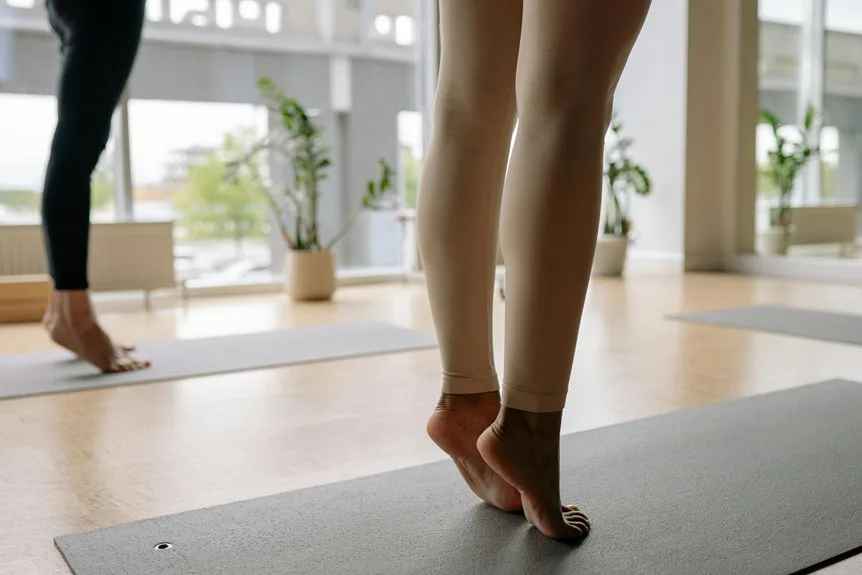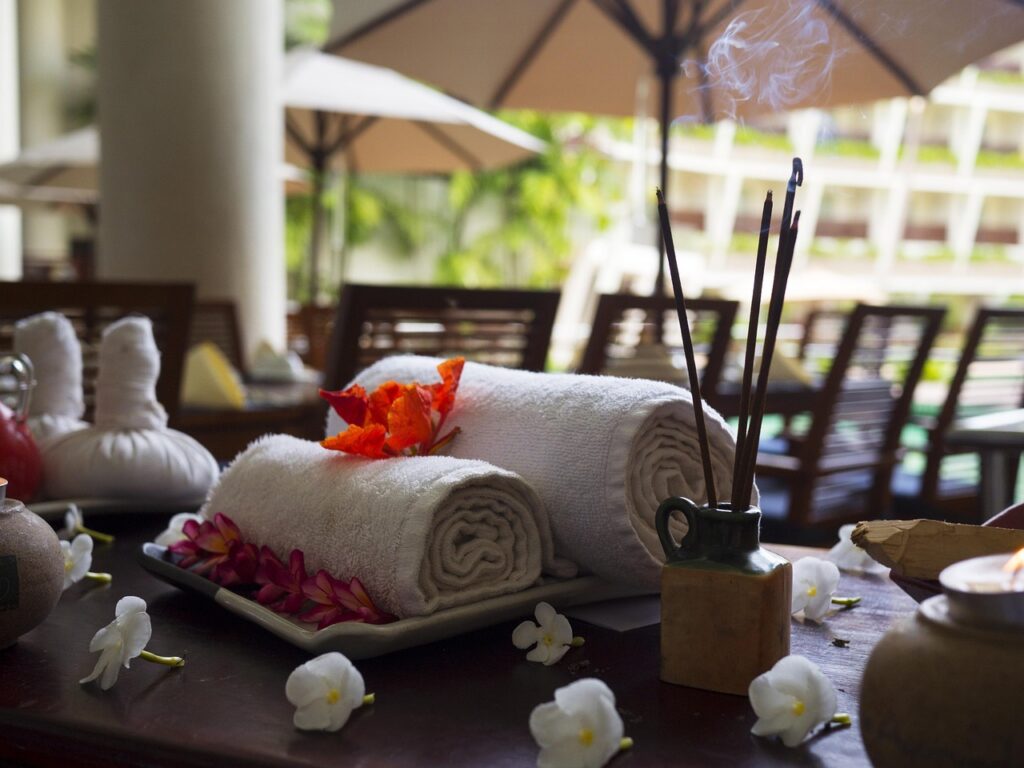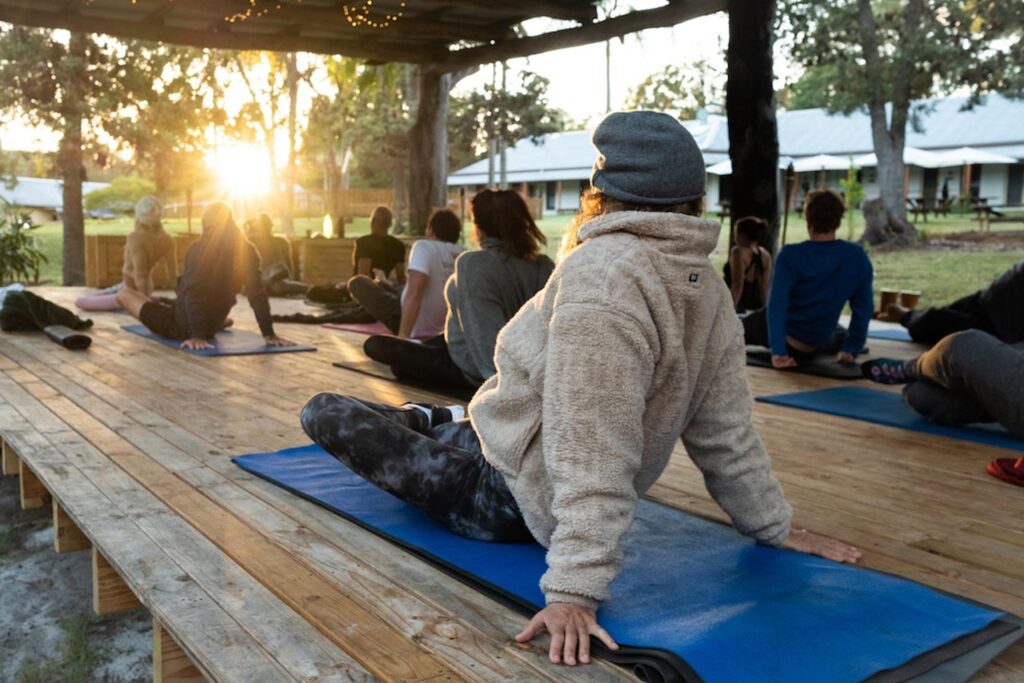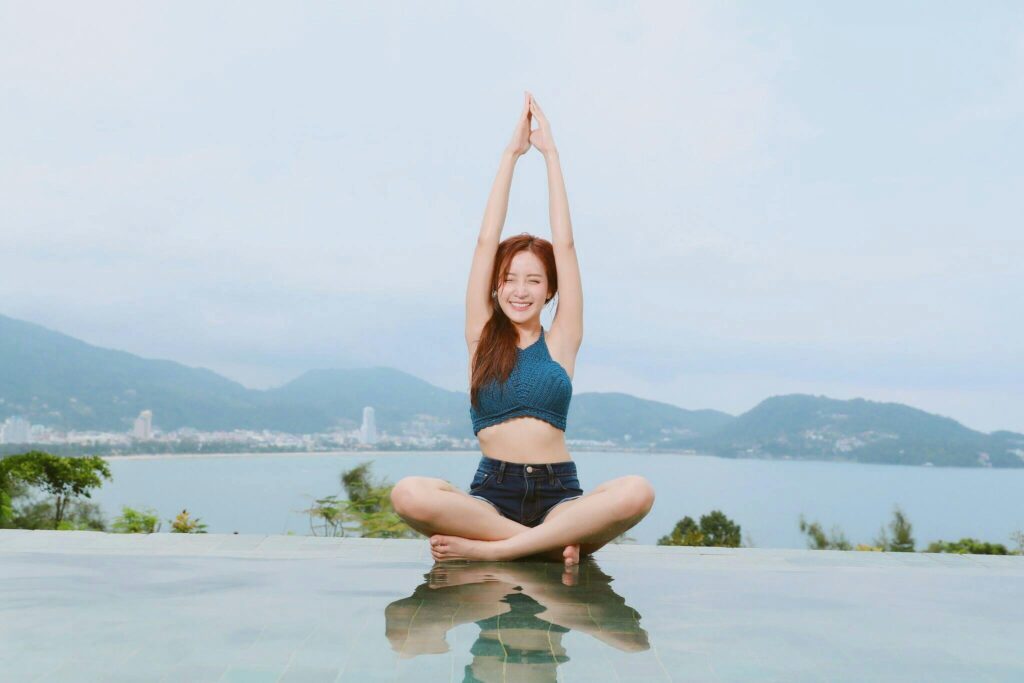Many people want to start meditating, but sticking with it can feel tricky at first. Finding time, staying focused, or even knowing where to begin can make the whole idea seem more complicated than it is. With practical tips and a bit of patience, anyone can build a steady meditation habit that actually fits into daily life. Curious about how simple changes can make meditation easier and more enjoyable? The next steps might surprise you.
Start Small and Build Consistency
Getting started with meditation doesn’t have to be overwhelming; in fact, it’s often easier when approached in small, manageable steps. Many people find success when they start small, committing to just two minutes of practice each day. Short sessions like these make the habit feel less intimidating, helping to build consistency and confidence over time. For those seeking a serene environment to enhance their meditation practice, consider the European-inspired comfort of Meadowlark Country House Resort, which offers tranquility and relaxation-focused amenities.
Choose a Comfortable Meditation Space
Setting up a comfortable meditation space can make all the difference, so it’s worth paying attention to both physical comfort and the overall vibe. A cozy chair or cushion helps you relax and stay alert. Soft lighting and calming decorations can turn any corner into a peaceful retreat. Choosing the same spot each day reinforces your routine and makes it easier to slip into a calm state of mind. Consider visiting luxurious wellness retreats like Sensei Porcupine Creek for inspiration on creating an intimate and serene meditation environment.
Prioritize Physical Comfort
While meditation is often visualized as a practice that requires perfect posture on a floor cushion, real progress starts with physical comfort. Choosing a comfortable spot that supports good posture is key—think a cozy chair or using cushions or supports under your knees.
Adjusting your position matters; a little shift can prevent discomfort and help maintain relaxation and focus. Creating a dedicated space with calming elements, like soft lighting or peaceful images, encourages a positive meditation environment.
Avoid lying down unless necessary, as it can bring on drowsiness. When physical comfort is prioritized, meditation feels more inviting and sustainable.
Consider incorporating elements from nature, similar to the Mendocino Coast’s scenic views at Stanford Inn Resort, to enhance your meditation environment and connect with the tranquility of the outdoors.
Enhance Space Ambiance
A thoughtfully chosen meditation space can make a surprising difference in how inviting and effective the practice feels. Adding calming elements like candles, gentle lighting, or leafy plants sets the stage for a peaceful environment where anyone feels welcome. Comfortable seating, whether a plush cushion or a sturdy chair, helps make longer sessions more enjoyable. Personal touches—maybe a favorite photo, an inspiring quote, or soothing sounds—foster a sense of belonging. Keeping an organized space is key for a relaxing atmosphere, as clutter can distract from mindfulness. Altogether, these details create a space that feels both inviting and uniquely yours. For those seeking inspiration in crafting a tranquil ambiance, destinations such as Solage, Auberge Resorts Collection, offer a harmonious blend of relaxation and natural beauty.
Set a Regular Time for Practice
Though finding the perfect moment might feel tricky at first, choosing a regular time for meditation can make all the difference in building a steady routine.
Picking a consistent practice time—like right after brushing teeth or before breakfast—helps integrate meditation seamlessly into daily life. Scheduling it, perhaps with a reminder or alarm, creates a reliable cue, signaling the brain that it’s time to meditate.
Over time, this scheduled habit becomes automatic, making the meditation routine feel natural. Many uncover that morning sessions enhance clarity and set a positive tone, helping everyone feel more connected and supported in their odyssey.
Use Simple Techniques to Anchor Your Focus
Staying focused during meditation can be tricky, but using simple techniques makes it much easier. Counting each breath, repeating a calming phrase, or paying close attention to how the air feels as it moves in and out are all straightforward ways to keep your mind anchored.
These methods give your attention a place to land, making it less likely to wander off on its own journeys.
Count Your Breaths
One of the simplest ways to keep the mind from wandering during meditation is by counting breaths, a technique beloved for its ease and effectiveness. To start, simply count each inhale and exhale until reaching ten, then gently reset back to one.
This breath counting creates a reliable anchor for focus, making it easier to notice and recover from distraction. Each time attention drifts, returning to the count encourages mindfulness and reduces mental wandering.
Over time, regular practice of counting breaths can build a strong meditation routine, helping individuals feel more connected, calm, and attentive in their everyday lives.
Use Repetitive Phrases
A simple way to stay focused during meditation is by repeating short, calming phrases with each breath. This repetition acts as an anchor, gently bringing attention back when distraction pops up.
Using familiar phrases like “in, out” can serve as a mental cue, making it easier to settle into regular practice and deepen mindfulness. When everyone uses the same grounding techniques, a sense of belonging and shared intention can grow.
Consider how repetition can help:
- Anchors attention, reducing wandering thoughts
- Provides a mental cue for returning to focus
- Builds concentration and mindfulness through regular practice
Observe Physical Sensations
Sometimes the simplest way to stay present during meditation is by tuning in to what the body is actually feeling. Noticing physical sensations—like the steady grounding of your feet on the floor or the gentle touch of air on your skin—can help keep attention anchored.
A body scan, where one moves awareness from toes to head, guides focus and brings clarity. Even holding a small object or resting a hand on the belly offers a tangible anchor.
Regular check-ins with sensations not only deepen mind-body connection but also encourage calm, making meditation feel more welcoming and supportive for everyone involved.
Embrace Distractions and Return Gently
It’s perfectly normal for thoughts to pop up constantly during meditation—studies even show that minds can wander every 30 seconds to a minute. When distractions appear, the key is to acknowledge them without judgment, then gently bring your focus back to your breath or anchor.
This repetitive redirection is not a sign of failure but rather the essence of practice, strengthening focus and mindfulness over time. Consider these ideas:
- Recognize when your mind wanders—it happens to everyone.
- Smile inwardly and offer kindness to yourself when you notice distractions.
- Each gentle return builds resilience, making mindfulness more accessible.
Track Your Progress and Celebrate Effort
Keeping track of meditation sessions can turn an abstract goal into something much more tangible and rewarding. By using apps or journals to record sessions, individuals gain visual evidence of their commitment to a meditation routine.
This simple act helps to track progress, offering motivation as people notice their growth over time. Celebrating effort—like hitting a streak or accumulating minutes—reinforces positive habits and supports habit formation.
Focusing on effort rather than perfection encourages a supportive mindset, making it easier to stick with meditation long-term. Data shows that tracking habits considerably raises the chances of maintaining consistent meditation practices.
Explore Guided Resources and Community Support
A great way to make meditation feel less intimidating and more enjoyable is by tapping into guided resources and connecting with others on a similar path. Meditation apps like Calm or Headspace offer guided meditations and expert guidance, making it easy to start and stick with a routine.
Progress tracking and prompts keep motivation high, while online meditation groups and local communities create a sense of shared purpose. Whether joining a virtual group or exploring new techniques, community support can turn solo sessions into a more meaningful voyage.
- Access guided meditations through meditation apps
- Join virtual groups for accountability
- Track progress for ongoing motivation
Frequently Asked Questions
How Do You Build a Meditation Routine?
Building a meditation routine involves mindful breathing, adopting a comfortable posture, and maintaining a consistent schedule. Utilizing guided sessions, managing distractions, setting goals, designing a supportive environment, using meditation tools, and tracking progress encourages a sense of shared commitment.
What Are the 4 R’s of Meditation?
The 4 R’s of meditation—Recognize, Relax, Release, and Recommit—integrate mindfulness techniques, breathing exercises, awareness levels, and relaxation methods, supporting concentration skills, mental clarity, stress reduction, daily consistency, and dispelling meditation myths within inclusive communities.
How to Start a Meditation Routine for Beginners?
When exploring how to start a meditation routine for beginners, one might consider mindful breathing, a comfortable posture, focused attention, daily consistency, calming environment, gentle prompts, beginner friendly techniques, time management, and supportive meditation accessories to promote belonging.
What Are the 5 Stages of Meditation?
The five stages of meditation include relaxation strategies to settle in, focus methods and concentration exercises, breathing techniques for mindfulness practices, observing energy flow for mental clarity, and integrating inner peace for stress reduction, nurturing a sense of belonging.
Final Thoughts
Just like planting a tiny seed grows into a sturdy tree, starting small with meditation sets the roots for lasting calm. By carving out a cozy corner, picking a steady time, and gently steering your focus back when your mind drifts, anyone can build a habit that sticks. Tracking progress and connecting with others adds fuel to the expedition. Before you know it, meditation becomes as natural as breathing—no magic lamp required, just a little daily practice.







